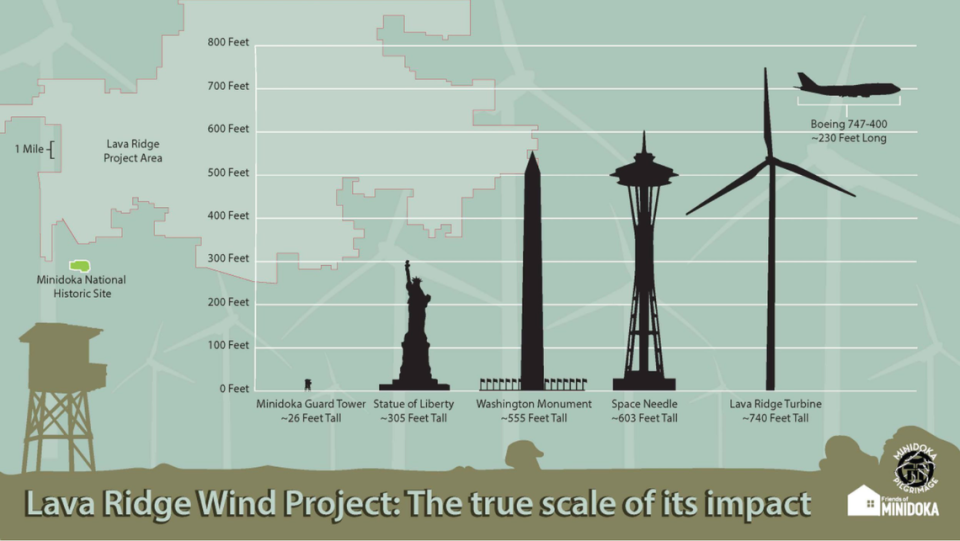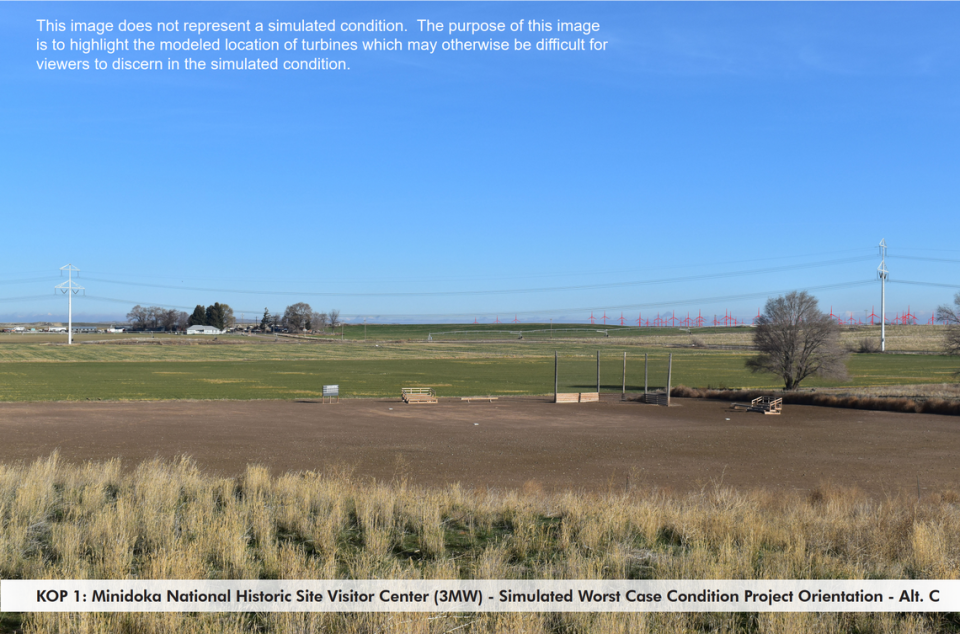‘Don’t do it’: Risch grills Interior secretary about wind project near Idaho’s Minidoka
- Oops!Something went wrong.Please try again later.
- Oops!Something went wrong.Please try again later.
Idaho Sen. Jim Risch delivered a concise message to U.S. Secretary of the Interior Deb Haaland on Tuesday regarding the Lava Ridge Wind Project in south-central Idaho:
“Don’t do it.”
Haaland testified before the Senate Energy and Natural Resources Committee about President Joe Biden’s 2024 budget. During the testimony, Risch grilled Haaland for about 7 minutes about the project, focusing primarily on her thoughts about how it would affect the Minidoka National Historic Site.
The clean-energy project, headed by Magic Valley Energy, a subsidiary of investment firm LS Power, is a proposed wind farm consisting of as many as 400 turbines on a 200,000-acre plot of land northeast of Twin Falls.
The southern edge of the wind farm would be as close as 2 miles to Minidoka, a pilgrimage site for the families and survivors of the Minidoka incarceration camp, where more than 13,000 people of Japanese descent were incarcerated during World War II after the attack on Pearl Harbor.
“I want to focus on one thing today, one thing and one thing only. And that is the Lava Ridge wind turbine project,” Risch opened up before asking what Haaland she knew about it.
Haaland responded that the Bureau of Land Management has been “engaged with stakeholders” as well as “state and local counties, grazing permittees, tribes and other federal agencies.” She also said BLM has been coordinating with the Idaho Resource Advisory Council and the Office of Collaborative Action and Dispute Resolution to engage with individuals tied to Minidoka.
In the space of 40 seconds, Risch cut off Haaland on multiple occasions, asking on six occasions, “What have you found out so far?” She would repeatedly say conversations were ongoing.
The third-term senator eventually ran out of patience and read to Haaland details about the project.
“Do you know how many acres are involved in this?” Risch asked.
“It’s 146,000 acres,” he continued, when Haaland didn’t know the answer. “Do you consider that a fairly significant piece of real estate? They’re talking about 370 turbines. The smallest ones are just slightly bigger than the Statue of Liberty.”
According to Friends of Minidoka, a group that supports the preservation of the Minidoka site, the Lava Ridge turbines will stand at approximately 740 feet tall. The Statue of Liberty is 305 feet tall.
Risch also referenced the Space Needle in Seattle, which stands at 605 feet.

Risch then handed a rendering of the viewshed from Minidoka to Haaland, asking her whether it was her future vision of public lands.
“Senator, I think there are a lot of visions for public lands,” Haaland said. “We have millions of acres of public lands all over the country, and they all look different.”
The Idaho Statesman reached out to Haaland’s office, which declined to comment on the project.

The Republican senator closed out the seven-minute grilling by noting the wide opposition to the project.
“They passed a resolution in both the (Idaho) House and the Senate unanimously bipartisan. You know what they said? Don’t do it,” Risch said. “There’s a resolution by the seven Idaho counties involved in this. All seven of them passed a unanimous resolution. You know what they said? Don’t do it.
“There have been letters signed unanimously by the Friends of Minidoka and the large Japanese American community inside and outside of Idaho. And you know what they said? Don’t do it. You’ve received a letter from myself, the governor, the rest of our delegation, and we’ve said the same thing. Don’t do it. So let me close with this: Don’t do it.”
Where does the Lava Ridge Project stand?
The deadline for public comments for the Draft Environmental Impact Statement, which outlines the project’s impact on its local surroundings, closed on April 20.
BLM spokesperson Brian Hires told the Statesman that the next step of the process is for BLM to review the nearly 11,000 comments the agency has received.
“Substantive comments will be used to further refine the analysis and possibly blend elements of the preferred alternatives, which were designed to reduce impacts to the resources like the Minidoka National Historic Site viewshed, Wilson Butte Cave, migration corridors for wildlife, and bats and birds,” Hires said.
The Draft EIS offered five alternatives, each with differing amounts of acreage and number of turbines. Hires said BLM is currently favoring Alternatives C and E. Here’s what each of those would entail:
Alternative C: The project would cover 146,389 acres and have a maximum of 378 wind turbines. Alternative C considers the project without siting corridors near Wilson Butte Cave and Minidoka. Alternative C also considers the project without corridors in locations that would contribute to wildlife habitat fragmentation.
Alternative E: A project area of 122,444 acres and a maximum of 269 wind turbines are involved. This choice provides a smaller project footprint and less infrastructure. Under Alternative E, the reductions in the project size are focused on adjustments to minimize impacts to the viewshed near Minidoka.

